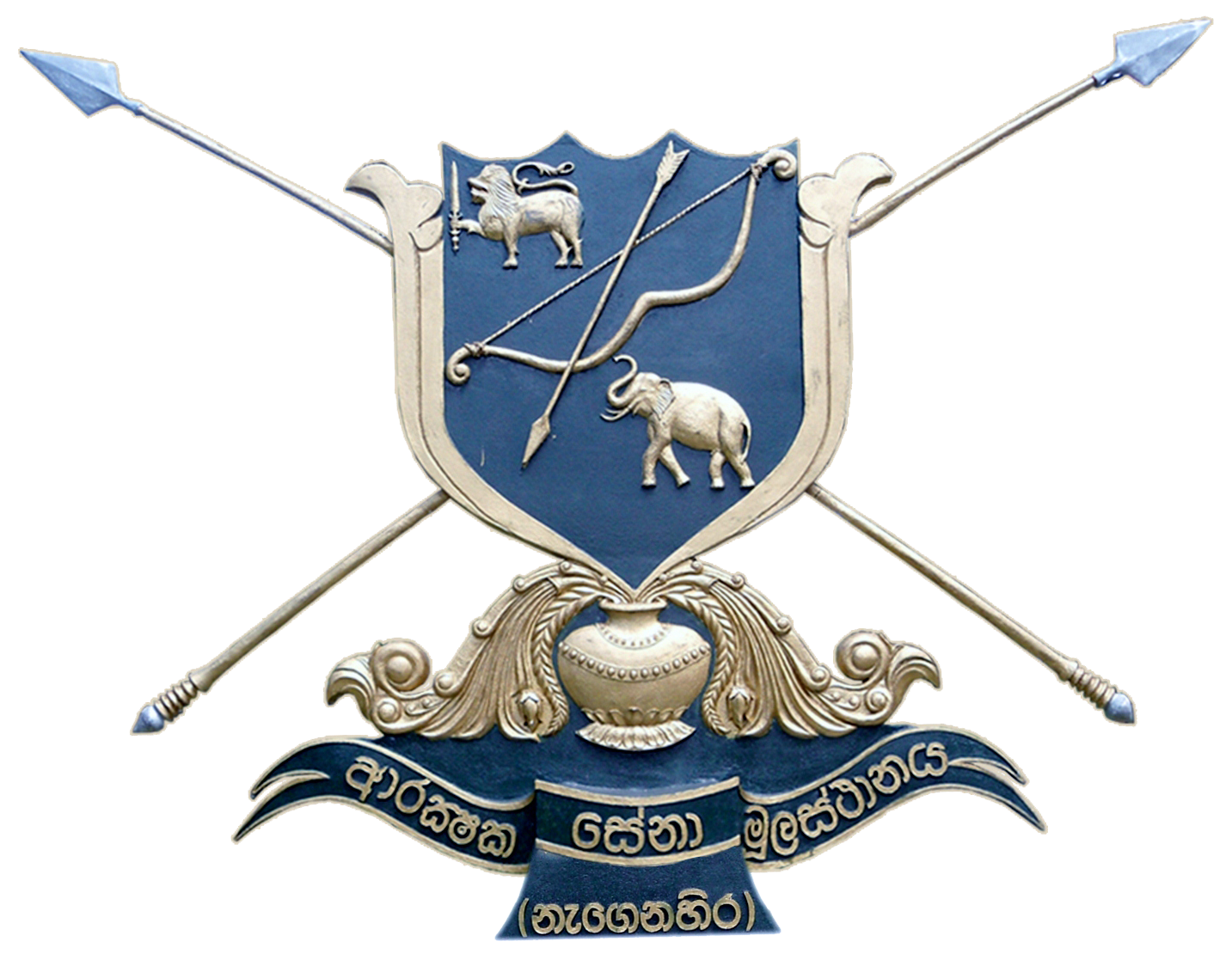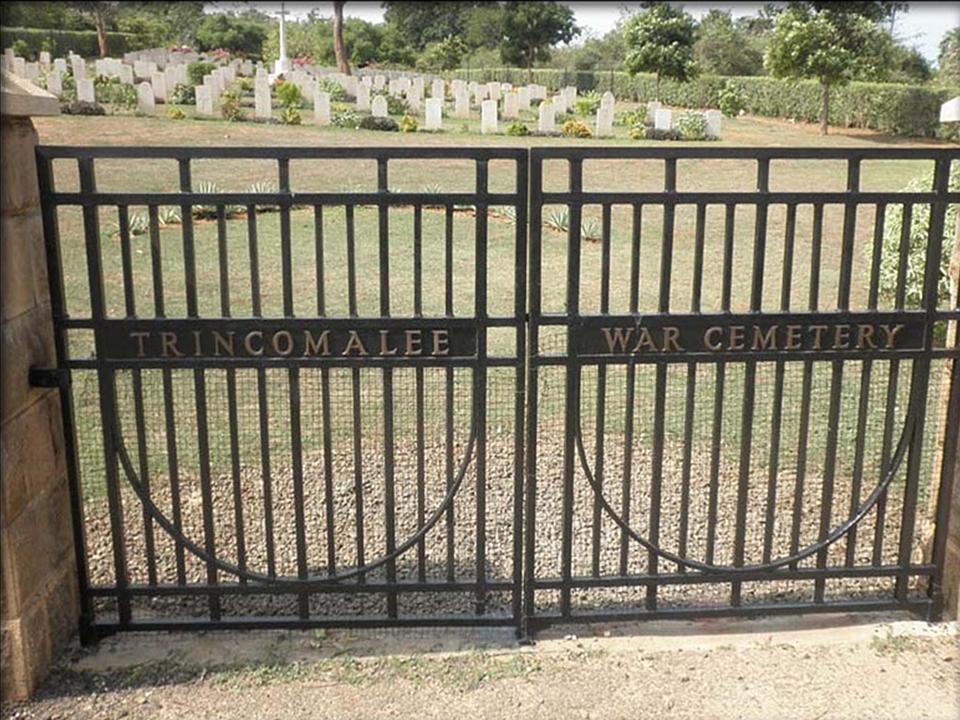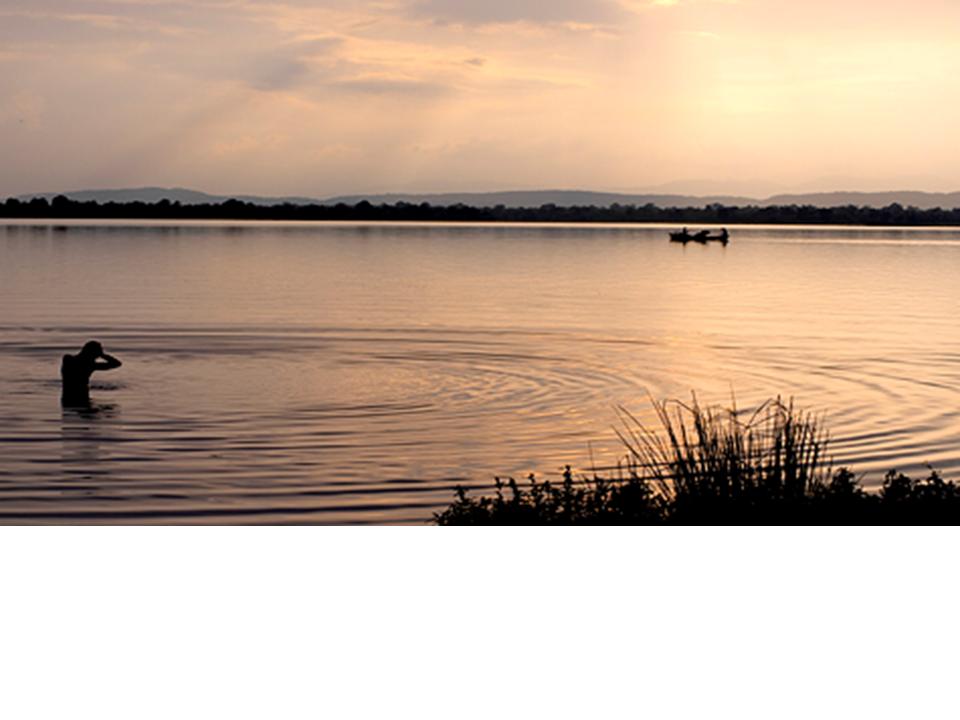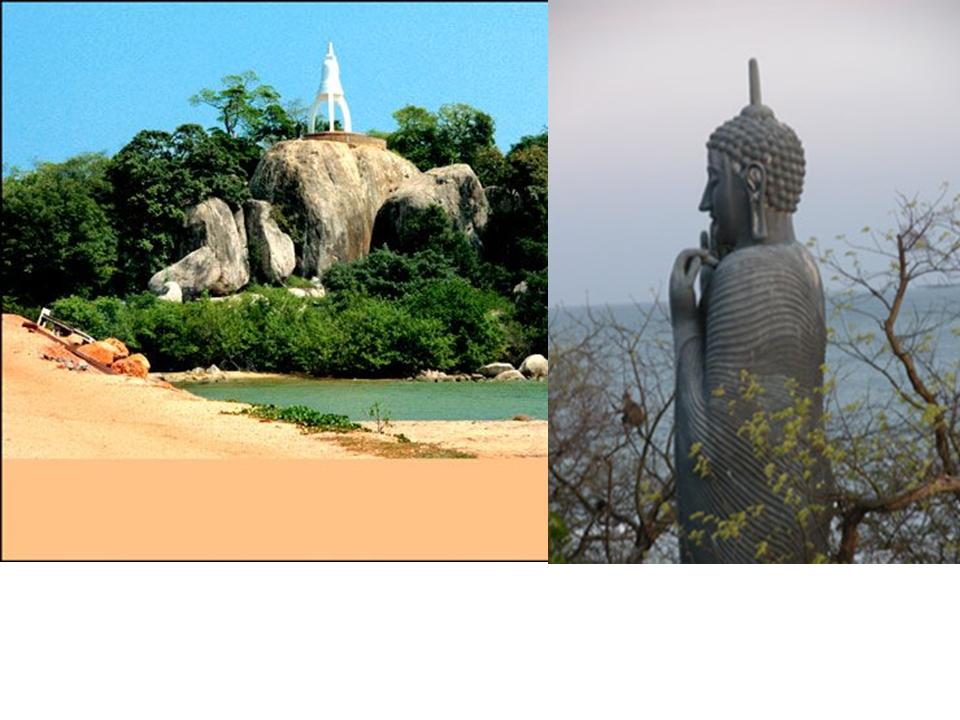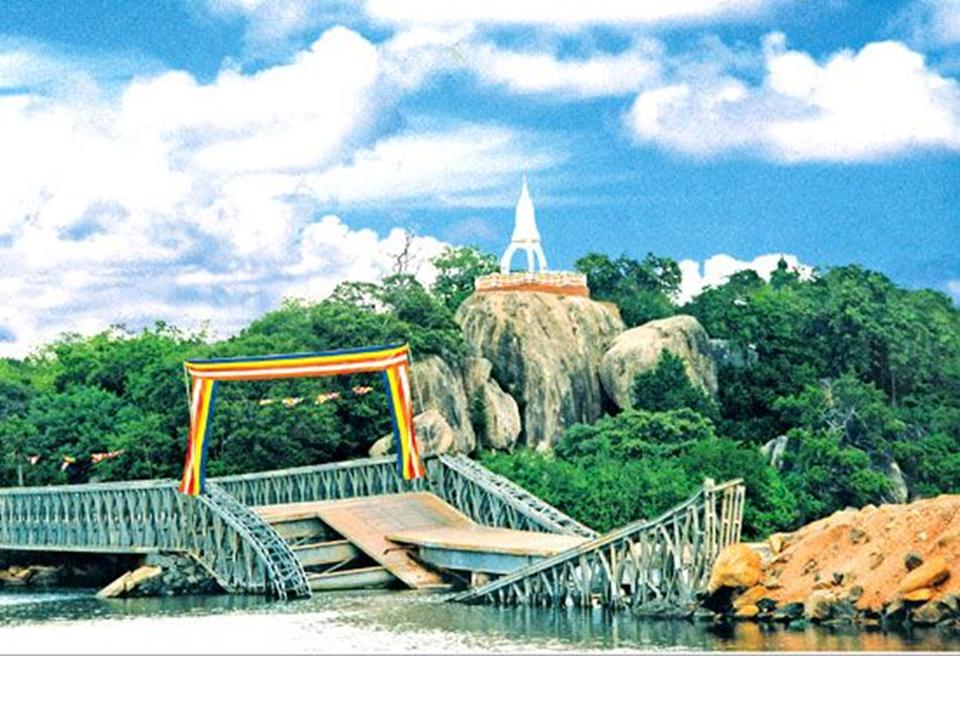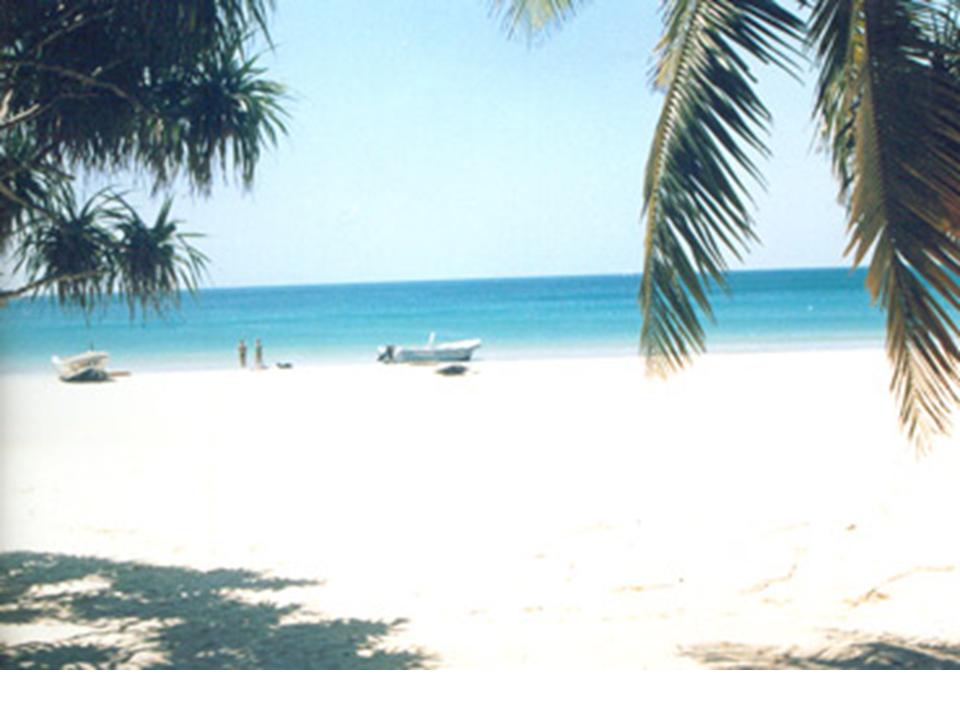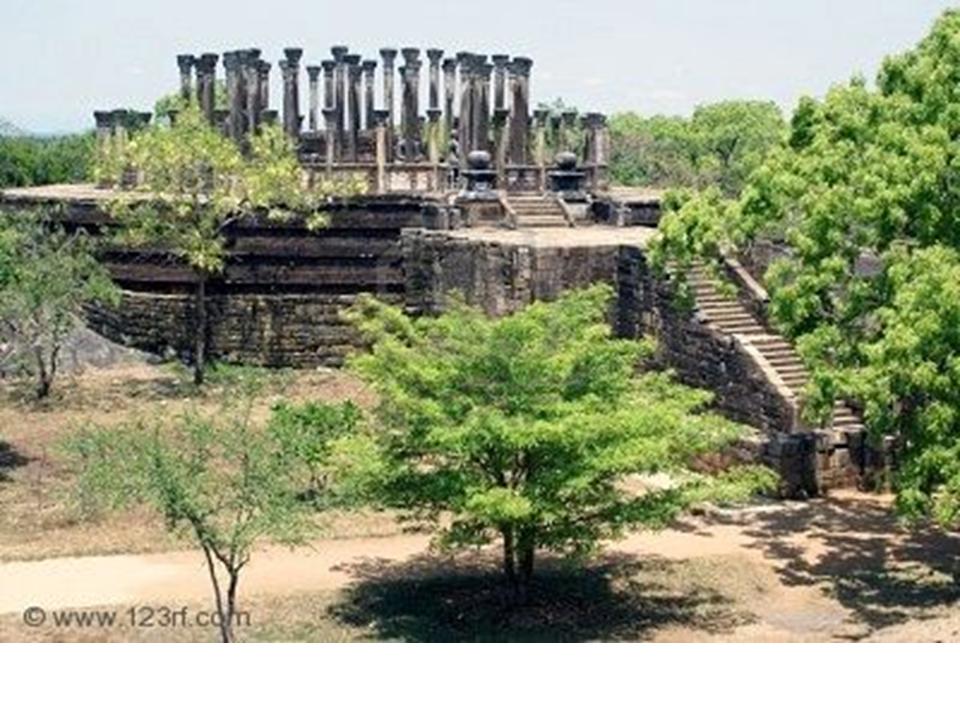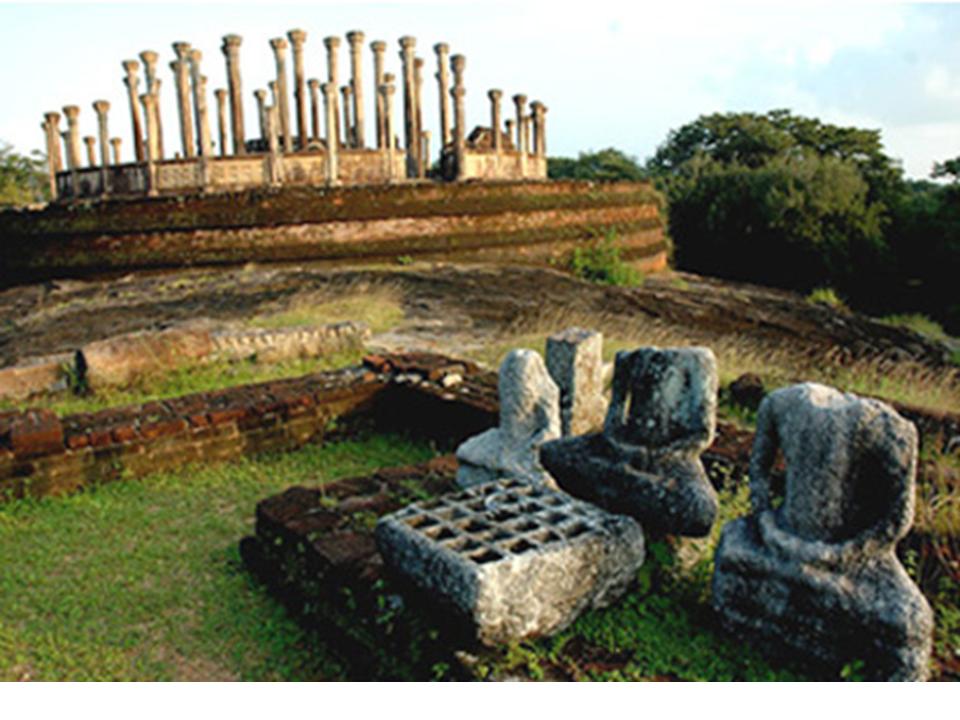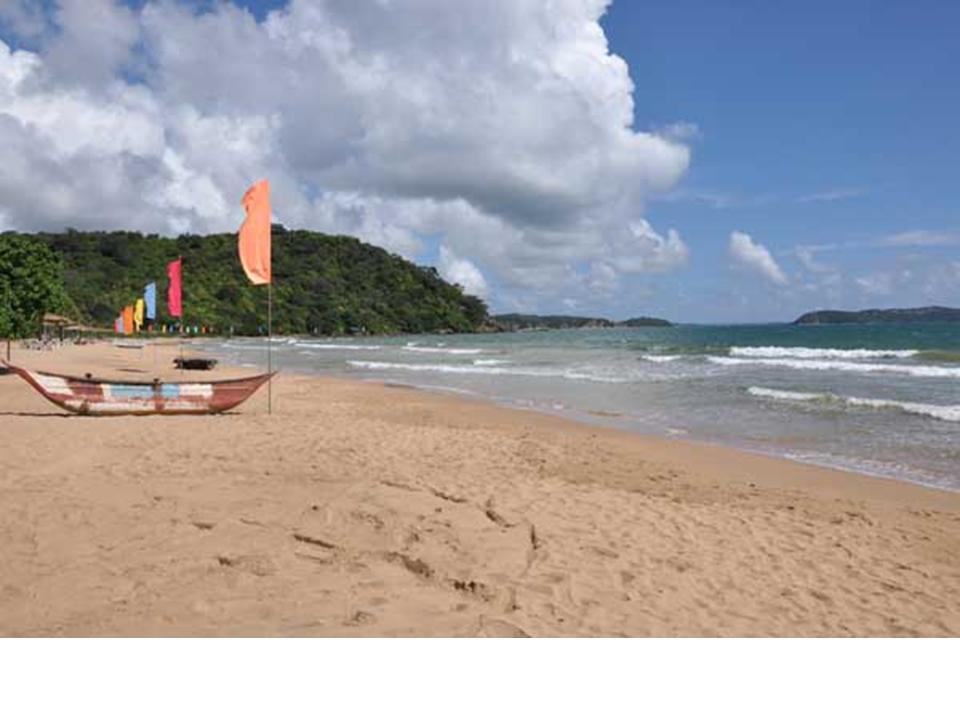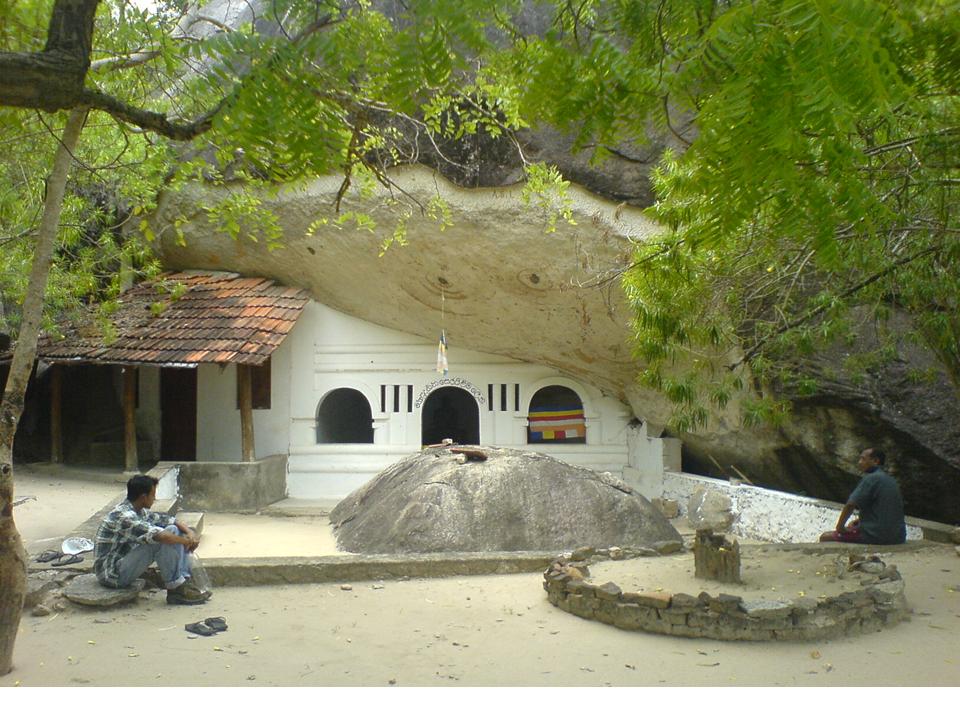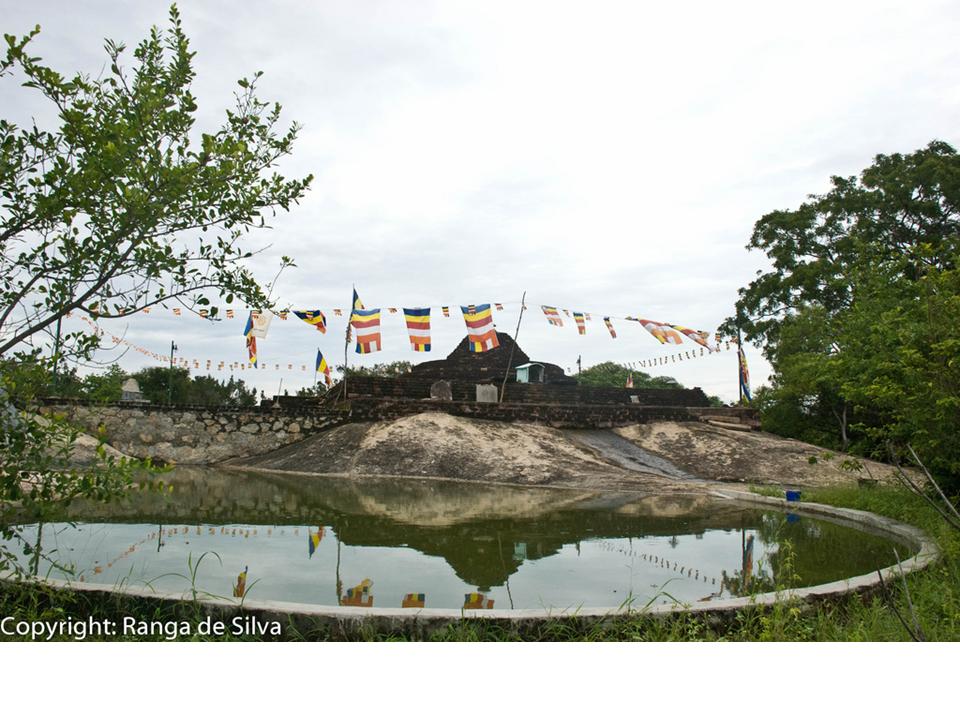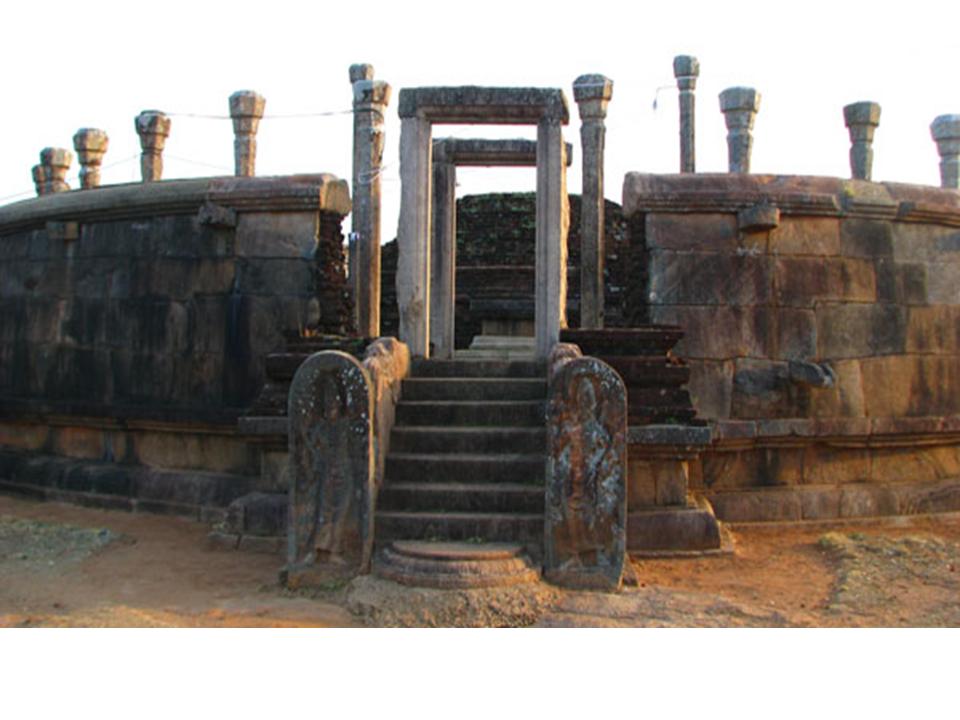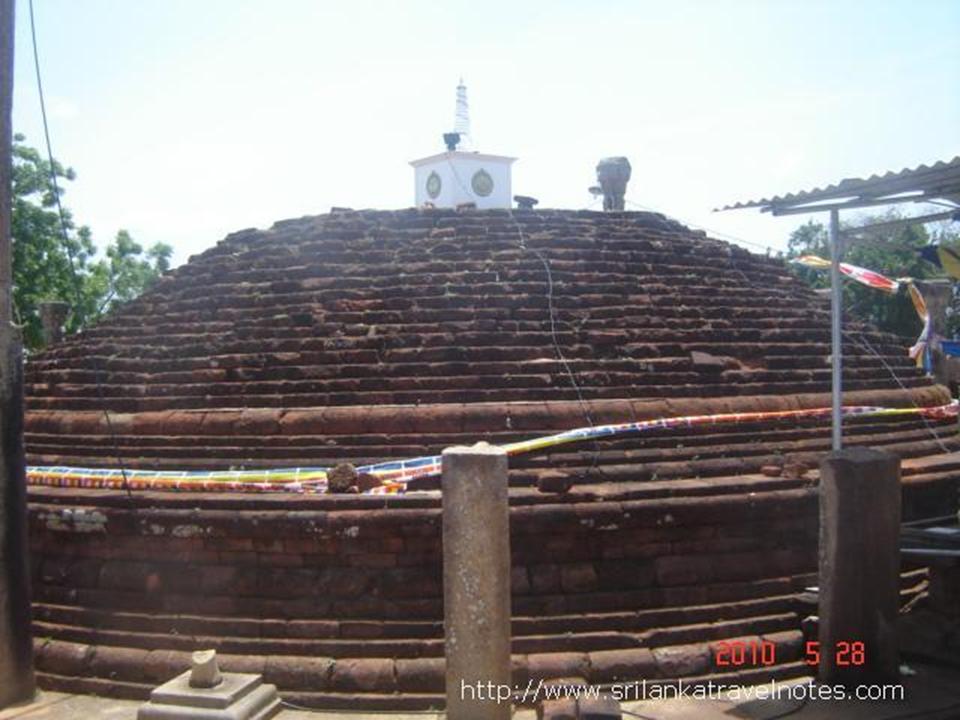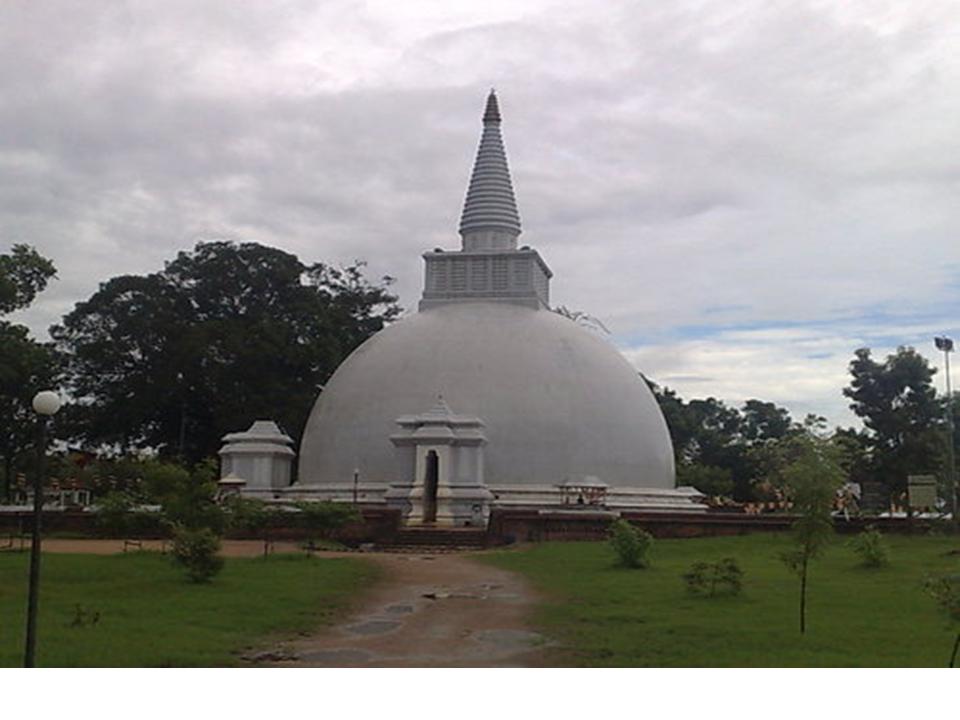WAR CEMETERY
From the main A6 road, just south of the town of Trincomalee, turn left onto the North East Coast Road, also known as the Nilaveli Road. The cemetery is approximately 6 kilometres along this road on the right (eastern) side.
The cemetery was originally the Combined Services Cemetery, but was taken over by the Admiralty from the military authorities in April 1948 for use as a permanent naval cemetery. On the withdrawal of United Kingdom Forces from Ceylon it became the property of the Ceylon Government who have granted the Commission security of tenure in perpetuity. Save for a few post-war and non-war graves it is purely a war cemetery, and service war graves were transferred to it from Trincomalee (St. Mary) Churchyard; Trincomalee (St. Stephen's) Cemetery, Kottadi Cemetery, Jaffna; and Vavuiyna Combined Cemetery. A special memorial commemorates a naval man buried in Trincomalee (St. Stephen's) Cemetery whose grave could not be found. The non-war graves are those of men of the Merchant Navy whose death was not due to war service, and of civilians, of whom some were employees of the Admiralty; while the post-war graves were dependents of servicemen, civilian employees of the Admiralty and dependents of such employees. (Distance - 1.5 Km from Trincomalee Town)
PARAKRAMA SAMUDRA
The huge lake upon whose northeastern shore Polonnaruwa rests is an inland sea known as the Parakrama Samudra. The largest irrigation tank of Parakramabahu I. It was the life-blood of the ancient city in the same way that it is the blood life of the religion today, providing water for the growth of thirsty rice crops and other foodstuffs. Its 5,600 acres of water irrigated an estimated 18,200 acres of paddy land.
Five minor lakes were incorporated in the building of the Parakrama Samudra, whose 8 1/2- mile bund contains 4 1/2 million cubic yards of earth. One thousand men employed in the hand labor of the period, working 24 hours a day. could scarcely have completed the job in 12 years. he vast water reservoir was built by King Parakramabahu (1153-1186) and today what you see as the Parakrama Samudraya is only a portion of his original creation.Parakrama Samudraya originally consisted of five large reservoirs separated by smaller dams to reduce the pressure on the main dam. Many smaller tanks has been built around the main tank to feed these primary tanks and to take excess water. The main five reservoirs which consist of the Parakrama Samudraya areThopa Vawa, Eramudu Vewa (Katu Vewa), Dumbuthulu Vewa, Kalahagala Vewa, Bhu Vewa. (Distance - 9 km from Polonnaruwa Town)
LANKAPATUNA VIHARAYA
Lankapatuna viharaya is located on a point and being surrounded by the sea and the lagoon. This beach is identified as one of the most beautiful beaches in eastern coast such as Nilaveli. How ever this place had been used by LTTE as their base for 30 years. The ancient pagoda & many of other ruins had been destroyed by them. The pagoda at Lankapatuna was built recently on the same base of the ancient one. The road from Lankapatuna to Thoppur was a gravel one built by the LTTE. Having heard the same, we decided to reach Muthur via Thoppur. That decision gave us the opportunity to visit to the black beach. Due to the presence of mineral sand, the sea shore was completely black. Like as Pulmudei, weight of the sand was extremely high.(Distance - 55 km from Trincomalee Town)
NILAVELI BEACH
He soft sands and the gentle breeze caresses your cheek as you tread softly on the golden sands of Nilaveli beach under the sunny sky. Yonder you will see the great Pigeon Island where a big flock of rock pigeons soar high with their graceful grey wings doing a sort of air dance. The beauty of Nilaveli is definitely like no other and after a long journey from he city, the fresh air and the serenity of the place will make you feel like you’ve come to heaven. Smack bang in the middle of the solitude is the Nilaveli Beach hotel which has been the first luxury hotel to make full use of the bounty that is known as Nilaveli. Speaking to us was the Resident Manager, Ravi Ramsay who said that the hotel has being doing well because of the fact that their efficient and loyal staff have made it so. Even though there have been certain incidents that have happened due to the conflict, they were savd because the people from the area protected it. He said, ‘We are lucky to have staff who treat their work place as a second home and have done immensely to safeguard it. Even during the devastation of the tsunami, we suffered greatly and it was only one of our hotel staff who brought us water from his own well to sustain us”. Today, he has been promoted as a supervisor and has been well-looked after for his services rendered.(Distance - 14.5 km from Trincomalee Town)
MEDIRIGIRIYA WATADAGE
This site situated in a beautiful surrounding has a history going in to the pre-Christian times. The brami characters found on the bricks and the some of the stone carvings is an indication of the long history of this site. The first reference to this site in the chronicles is during the king Kanittha Tissa (192-194) of the Anuradhapura Era. Later many kings have contributed to this complex and finally after the invasion of Maga this site too was abandoned when the Sinhalese migrated to the southern parts unable to withstand the torture. This site was later discovered in 1897 in the middle of a thick jungle by Mr H.C.P Bell and he immediately realised the importance of the site calling it an architectural jewel. Initially the restoration work was done by mainly Muslim labourers as the Buddhist labourers did not want to work at a Buddhist temple for money. This they felt was a sin. This restoration work was finally completed in 1945 and was open to the public giving a glimpse of what this temple would have looked over 1000 years ago. (Distance - 32 km from Polonnaruwa Town)
MARBLE BEACH
Unspoiled by man, it is a place where one can enjoy the scenic beauty of the eastern coast of Sri Lanka while basking in the history of this strategic town, boasting of one of the largest natural harbours in the world. Air Force Resort Marble Beach, located not very far from the newly built Kinniya Bridge, the longest bridge in Sri Lanka is built around Marble Beach, a virgin stretch of beach which has always been synonymous with Trincomalee. Air Force Resort Marble Beach has been designed to blend with its natural surroundings, leaving its natural beauty and tranquility intact so that its guests will be able to enjoy nature at its best while also enjoying all the amenities they need for their comfort. It will give you sense of communing in harmony with nature. Life guards around the clock will ensure your safety while you enjoy boat rides, sea baths and even snorkeling along the lovely coral reefs while. Beach Volley ball and Mountain Hiking will also be available for those who may be interested in drier pursuits
Air Force Resort Marble Beach boasts of 5 Cabanas – Ebony, Teak, Mahogany, Margosa and Satinwood. We also offer a two storied Cabana with three rooms named Tamarind. If you are looking for luxurious solitude, these Cabanas and villa will be perfect for you, offering you peace and tranquility, with only the sound of the waves splashing on the beach. (Distance - 15.4 km from Trincomalee Town)
KUDUMBIGALA TEMPLE
Panam Pattuwa is one of the most neglected areas of the Eastern Province. Kudumbigala, which is located in the Panam Pattuwa, is a hundred times worse.There is a thick jungle covering thousands of acres. No road worth its name runs through it. And in the middle, rising above the tree line is a rock. This is Kudumbigala. Resident in this vast area, almost totally devoid of human beings, are trees that would be unfamiliar to many. The trees and vines and the natural canopy their intertwining has produced, blots out the sky once you enter the jungle. There is a certain enchantment and coolness that accompanies anyone creeping through the thick foliage towards Kudumbigala. This is perhaps one reason why yogis of a bygone age chose this place to reflect on the eternal verities. Many of these blessed beings whose journey through sansara had seen them enter the irreversible process of liberation that comes with the securing of marga pala, we are told, reached the final stage of realisation in the monastic complex called Kudumbigala, made up of over 200 rock caves.
The inscriptions in brahmi script and other evidence in the recently discovered cave, Maha Sudharshana Lena, shows that Kudumbigala was established as an aranya senansanaya in the pre-Christian era. A stone inscription has it that the Maha Sudharshana Lena was built and gifted to the Arahats by Nandimitra Yodaya, one of King Dutugemunu’s “Dasa Maha Yodayas”. (Distance - 109 Km from Ampara Town)
GIRIHADU SEYA
Girihadu seya is considered as the first Dageba in Sri Lanka, done by Thapassue Balluka Merchants. This is located in Thiriyaya close to Trincomalee Pulmoddi road.Load Buddha spent 7 weeks ( sath Sathiya) after his enlightenment ( This is around 528 BC) and End of that period, the 50th day two brother merchants call "Thapassu Ballula" offered the first dana ( alms giving). After the Dana, they requested some thing to warship and received "Sacred Kesha Datu"(lock of hair relic) . Those merchants used to travel different parts in the region and came to Sri Lanka also. One day they stayed in this area and kept this relic container on top of a rock and went to the suburb area for the business. On their arrival they found that the container cannot be moved and decided to build a pagoda enshrining the hair relic. Now this is call Girihadu Seya. This place was abandoned for several centuries and restoration of this Pagoda was done 1950's.
The area was under LTTLE control in recent past and they have demolish almost all the new buildings done in last 50 years. Same time the temple monks were chased out. But the main Seya ( Pagoda) was escaped without any harm. They have demolished the main Shrine room and the Awasa geya, where bikkus live.Currently most of the historical temples in the eastern province under threat of the treasure hunters. Some treasure hunting attempts in Girihadu Seya area also reported. (Distance - 46 km from Trincomalee Town)
SOMAWATHI CHAITHYA
The Somawathi Chaithya is located by the bank of the Mahaveli River within the Sanctuary named after it and nearly 20 km north east of Polonnaruwa. The flood plains of Mahaveli River have been inhibited by a large number of wild animals ranging from elephants, wild buffalo, deer and other grass-eating animals fed by the luxuriously growing grasslands. The animals are protected by the declaration of Wasgomuwa Strict Natural Reserve, Flood Plains National Park, Trikonamadu Natural Reserve and the Somawathi Chaithya Sanctuary all located to embrace low laying banks of the mighty river. The ancient place of Buddhist worship lying within the Polonnaruwa District was a casualty of war and had been deserted for 15 years. When the villagers and the temple priest flew the area in fear, the restoration work of the Chaithya had to be abandoned.
Five years ago, it was reported that the Pinnacle Gem of the Dagoba (Chuda Manikyaya) was missing and feared to have been stolen. But recently the villagers who cleared the Dagoba compound found the Pinnacle Gem in the nearby thicket. The Department of Archaeology states that most likely the Gem would have fallen off the pinnacle due to corrosion. The Dagoba and the temple that was deserted for 15 long years have been spared of being ravaged.
The proud Sri Lankan cultural heritage is intimately linked to the Wewa and Dagaba (Stupa), symbolising the twin heritage we have in Sri Lanka - a glorious series of stupas and reservoirs. Nestling on the banks of the Mahaweli Ganga (The River of Great Sands) is the historical Somawathie Chetiya in Polonnaruwa where Lord Buddha’s right Tooth Relic is enshrined. Ancient chronicles of Sri Lanka state that the very first Arahant of this country Ven. Aritta, visited the abode of Gods and brought back to Sri Lanka the Sacred Right Tooth of the Enlightened One. This Holy Relic was handed over, in turn, to king Giri Abha and his consort Queen Somawathie who was King Kavantissa’s sister. Queen Somawathie had a yearning to construct a Stupa in adoration of the Buddha. (Distance - 38.9 km from Polonnaruwa Town)
SERUWILA MANGALA VIHARAYA
The Seruwila Mangala Viharaya in Trincomalee district is considered one of the most venerable ancient Buddhist temples to be found in the Eastern province where once Buddhism flourished at its peak. According to historical annals King Kavantissa who ruled the Ruhuna built this temple 2231 years back by enshrining the forehead relic of Gautama Buddha. It is believed that three viharas existed at this particular spot built during the periods of three former Buddhas named Kakusanda, Konagama and Kasyapa with their relics enshrined and Gautama Buddha who was the last Buddha in this eon had personally visited this place and offered eight handfuls of 'Sapu' flowers. Gautama Buddha has not only foreseen that a king by the name of Kavantissa will build a temple with his forehead relic enshrined in it but has wished that this temple should be named 'Mangala' viharaya.
King Kavantissa, father of King Dutugemunu who ruled the Ruhunu Rata after having obtained the forehead relic of Buddha was searching for a suitable site to build a vihara. Being an ancient custom the king directed the royal elephant to lead the way and the King himself with workmen and soldiers followed. After travelling for many miles the party arrived at a place known as 'Varahasondi' in Sri Gonapura, a region in Rajarata and the elephant remained unmoved. Instantly work was started and within a short period a vihara was built with a Stupa enshrining the forehead relic. King Kavantissa also built several other Viharas in the area and thousands of Buddhists were settled down. Buddhism flourished in this area for several centuries. (Distance - 42 km from Trincomalee Town)
